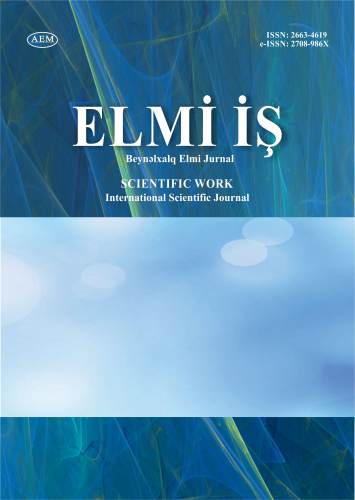Arxiv
2024 Зейнаб Шахвалад гызы Рустамова
Азербайджанская государственная
академия физического воспитания и спорта
cтарший преподаватель
zemarustamova@rambler.ru
К ВОПРОСУ О ВРЕМЕННЫХ ФОРМАХ ГЛАГОЛА В НЕМЕЦКОМ ЯЗЫКЕ
Alman dilində feilin zaman formaları məsələsinə dair
Xulasə
Müasir alman dilinin altı indikativ zaman forması iki zaman perspekti (istiqamət) yaratmaq məqsədi daşıyır: indiki, keçmiş, gələcək kimi (mütləq zaman mənası); eyni vaxtda - hərəkətlərin müxtəlifliyi (nisbi zaman dəyəri). Formalar müxtəlif nitq şəraitində işləndikdə onların çoxmənalılığı özünü göstərir, formaların çoxsaylı kəsişməsi, mənalarının yaxınlaşması, sinonimliyi müşahidə olunur. Ona görə də zaman formaların mənasını ifadə edəerkən həmin beş zaman sferasına görə izah etmək məqsədəuyğundur: eyni vaxtda, müxtəliflik, indiki, keçmiş, gələcək zaman ifadə edir.
Açar sözlər: Alman dili, indiki, keçmiş, gələcək, zaman formaları
The question of temporary forms of the verb in german language
Summary
The six indicative tense forms of the modern German language are intended to create a tense perspective (orientation) in two dimensions: as present, past, future (absolute temporal meaning); as simultaneity - the diversity of actions (relative time value) ). When forms are used in different speech conditions, their polysemy is manifested, there is a multiple intersection of forms, convergence of their meanings, synonymy. Therefore, it is advisable to expound the meaning of tense forms according to those five tense spheres that they express: the present, the past, the future; simultaneity, diversity.
Key words: German, present, past, future, tense forms
MƏQALƏNİ YÜKLƏ
[175.85 Kb] (yüklənib: 188)
Baxış:
8 753

